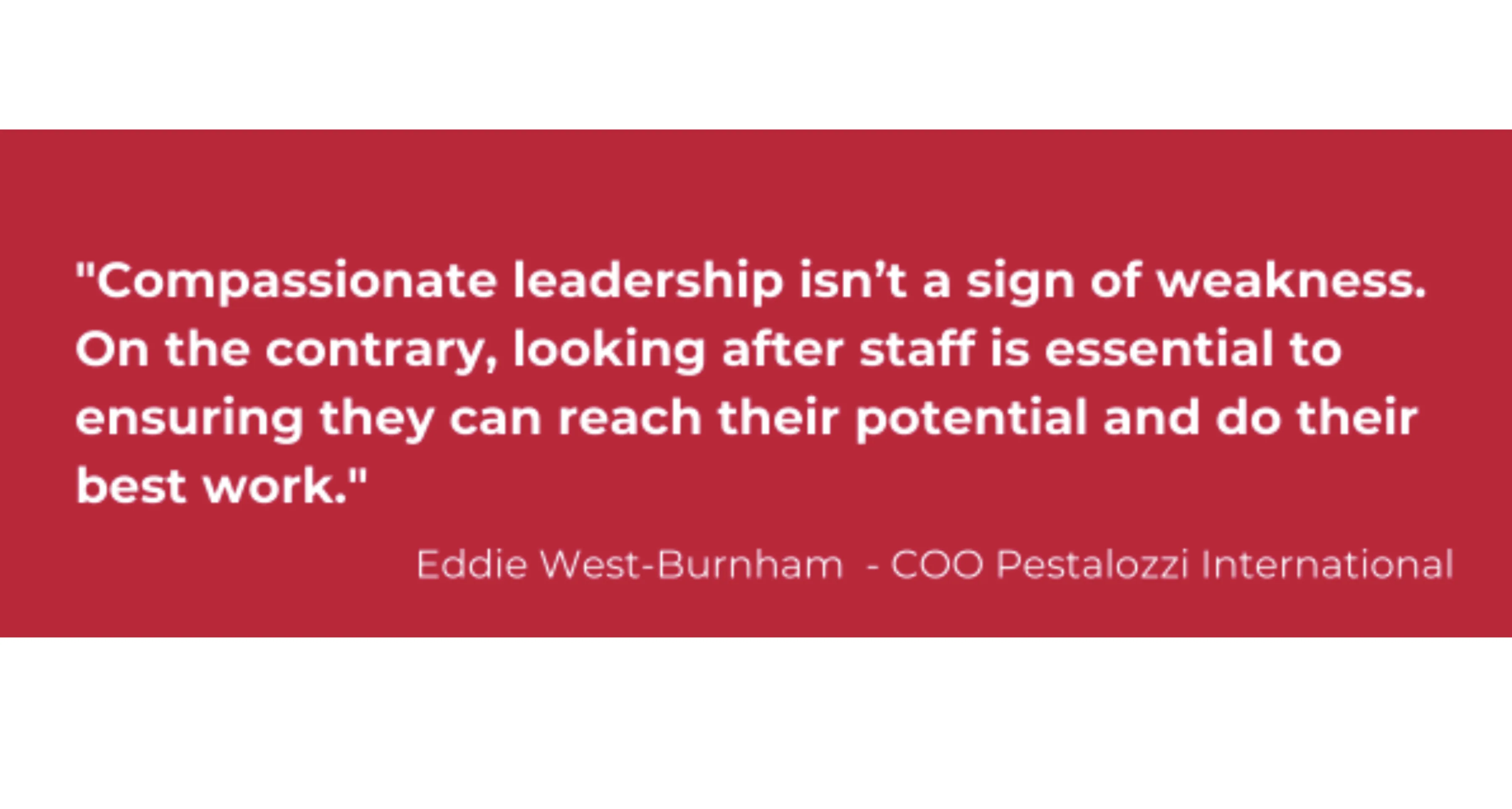
Compassionate leadership and starting anew.
From our COO Eddie West-Burnham.
How to create a psychologically safe and mentally healthy workplace
When it became apparent that the charity that I was working for was going to merge with another organisation, I had a definite twinge of apprehension over what the new working world would look like. But I was lucky, I met with Chief Executive Officer - James Haughton, who was very reassuring, then with the team I’d be working with, who again did a great job at putting my mind at rest. I’m pleased to say that two weeks into my new job and so far so very good.
Starting at a new organisation
But as we know, it's not like that for everyone. No matter what your age, and I’m on the wrong side of 60 (still not sure how that happened), starting a new job can bring up a mix of excitement and anxiety. It’s a big change, and perfectly normal to feel a maelstrom of emotions, possibly even a bit overwhelmed - will I fit in? Will they like me? Can I meet their expectations? What if I get lost, or forget things, or feel so completely out of my depth I panic? The first few days can feel like a whirlwind, which is why World Mental Health Day 2024 is focussing on Mental health at work.
Every year, one in five employees experiences a mental health issue of some kind. In fact, Mental ill health is now the most common cause of work-limiting conditions among those aged 44 years and younger, added to that, the number of workers aged 16–34 years who reported that their mental health limits the type or amount of work they can do has more than quadrupled over the last decade. (The Health Foundation 2023)
Despite the prevalence of mental ill health in the workplace, and everything we know about the need to remain in good mental health, it remains a taboo topic in many workplaces. All too often, managers and leaders ignore the human and economic impact that poor mental wellbeing health has on their business, research from Deloitte estimated up to £45 billion is lost annually through presenteeism, sickness absence and staff turnover.
Recent research finds that, on average, there is a positive return on investment of around £5 for every £1 invested in mental health interventions in the workplace.
Creating a psychologically safe and mentally healthy workplace isn't as difficult as many people think.
To get things started adopt some of the following strategies:
Create a supportive culture with open and honest communication; encourage and promote regular dialogue between employees and management, including flexible working hours, regular check-ins and feedback sessions where mental health is prioritised. This will help ensure stigma is reduced, and employees feel safe discussing their well-being.
It goes without saying, but sadly needs to be repeated, compassionate leadership is an essential component of any healthy organisation. Managers should focus on developing relationships through listening, understanding, empathising and supporting staff that would enable them to feel valued, respected and cared for. Treating people with kindness isn’t a sign of a weak leader, on the contrary, looking after staff is paramount to ensure they can reach their potential and do their best work. The research is clear, those who work in supportive teams with clear goals and good team leadership, have dramatically lower levels of stress (West et al 2015).
A psychologically safe environment is essential if staff are going to thrive. Having a management team that is trained to recognise and support people with their mental health needs, having access to relevant mental health resources, like crisis support and counselling services, providing training and support in areas such as resilience and developing a growth mindset, all these things will contribute to a workplace that is conducive to good well-being.
Love, care and kindness were central to the educational philosophy of Johann Pestalozzi. He instinctively knew, and was committed to, educational practices which have strongly influenced educational practices across the globe and which form a core component of our work at Pestalozzi International. Pestalozzi’s work remains an exemplary reminder of what is important in education for the holistic development and growth of children and young people.
In the 1990’s, the US Army War College coined the term VUCA to describe the new world order: volatile (V), uncertain (U), complex (C), and ambiguous (A). Initially used to describe the state of world affairs in a post-Soviet Union world, it quickly became a common strategic language in many organisations. Given the increasing complexity of delivering education in a VUCA world with chronic work overload and a pandemic of mental ill health, compassionate leadership should not be viewed as a ‘soft option’, but an essential approach to managing organisations.
A final word for new starters, it may take weeks or even months to fully acclimatise, be kind to yourself as you navigate the transition to your own new world order. Take time to adjust to a new culture and embrace the opportunity to immerse in the orientation and training on offer, spend time getting to know new colleagues, be aware of information overload, take notes and ask questions to clarify anything you don’t understand. Reflect on past challenges, on how you overcame them and identify what worked and apply it.